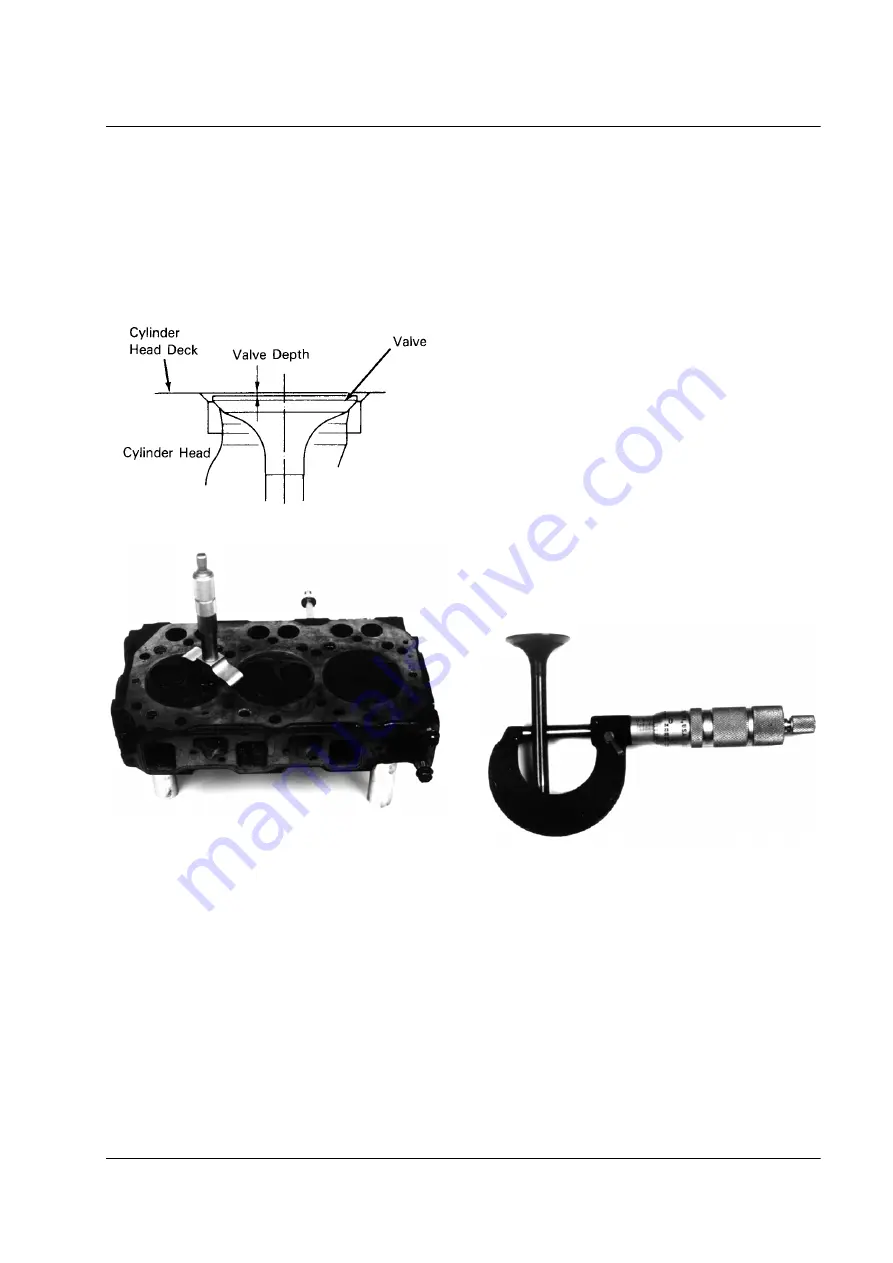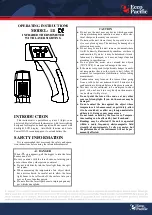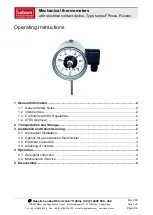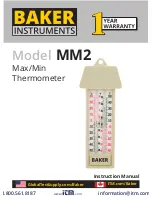
Inspection and Reconditioning (Rev 1/97)
53
Valve Depth
The valve depth is the distance between the cylinder head
deck and the valve.
Valve Depth
Measuring Valve Depth
The valve depth is a critical dimension for most diesel
engines. Grinding the valve or the valve seat increases the
valve depth. As the valve depth increases, the volume of the
combustion chamber also increases and the compression
ratio decreases. Decreasing the compression ratio can cause
hard starting or poor performance. Therefore it is very
important to check the valve depth of each valve before and
after grinding the valve, and before and after grinding the
valve seat. If the valve depth is near the wear limit before
aea260
aea261
grinding the valve or valve seat, the valve, the valve seat or
both may need replacement. If the valve depth is over the
wear limit after grinding the valve or the valve seat, the
valve, the valve seat or both must be replaced.
To check the valve depth, install the valves in their respec-
tive valve seats and measure the valve depth of each with a
depth gauge or a caliper. The wear limit for both the intake
and exhaust valves in all of these engines is .039 in. (1.00
mm).
Valves
1. Clean and inspect the valves. Replace valves that are
cracked, bent, or have valve faces that are significantly
damaged.
2. Measure the outside diameter of the valve stems. If the
valve stem is smaller than the wear limit (refer to Spec-
ifications), replace the valve.
Measuring Valve Stem
3. The valves can be ground to clean up any wear or
minor damage on the valve faces. Grind the valves until
all signs of wear or damage are removed. Grind the
valve faces to the following angles:
Intake 30
degrees
Exhaust
45 degrees
aea262
















































